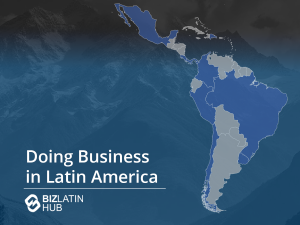In recent years, Peru underwent significant improvements in its economic, fiscal, and trade policies. This is thanks to the establishment of favorable tax and monetary bases, as well as the promotion of its exports through different trade agreements (FTAs). One of Peru’s most prized agreements is the Canada-Peru Free Trade Agreement.
Peru has achieved significant growth in foreign investment as a result of these initiatives. Its exports have managed to attract the interest of many foreign companies. Among the Peruvian sectors that stand out the most are mining, agribusiness, fishing, light industries, and tourism.
As an exporter or business executive, it is essential to understand the business culture of the countries where you want to establish trade operations. A clear idea of the business culture will lead to more successful interactions. Likewise, it includes the main language used in official documentation, the type of organization you are dealing with, and other organizational structures.
The FTA that Peru signed with Canada is considered one of Peru’s most successful agreements, as Canada is a country whose GDP per capita exceeds US$36,000 per year. In the following article, we will explain the business relations between Peru and Canada.
Canada-Peru Free Trade Agreement

The Canada-Peru Free Trade Agreement was signed in Lima on 29 May 2008, and has been in force since 1 August 2009. It was agreed that 100% of the negotiated items could enter Canada free of tariffs.
This current agreement is an update of the previous Canada-Peru Foreign Investment Promotion and Protection Agreement (FIPA), which came into force in June 2007. The updated agreement provides greater transparency and protection to investments. This has ultimately attracted more Canadian investors and increased their interest in business expansion in Peru.
Boosting the Peruvian economy
The Canada-Peru Free Trade Agreement significantly increases the commercial exchange between these two countries. Through this agreement, both countries made two bilateral commitments. First, a commitment to trade where both parties agreed to eliminate tariffs on goods exchanged. Second, the promotion of multilateral investment flows and seeking to expand the scope of each country’s businesses involved in key markets.
According to the Peruvian Ministry of Foreign Trade and Tourism (MINCETUR), trade increased by 16% during the period 2009-2015. Currently, the main products exported to Canada are gold, gasoline, silver ores, copper, lead, raw silver, fish oil, zinc ore, fish flour, natural gas, agricultural products, handicrafts, metal-mechanical, non-metallic mining, hides and skins, chemicals, steel, textiles, jewellery, among others.
An important aspect of this FTA is trade facilitation where exporters from both countries are given more flexibility to take advantage of tariff benefits. For example, only transport documents are requested when a good is transshipped without being stored in a third territory. In doing so, the benefit is not lost.
Furthermore, this agreement boosts trade with Canada by offering great business opportunities for new Peruvian products that are appearing in the market such as aguaymanto (cape gooseberry), sacha inchi oil, handicrafts, and more.
Thanks to this agreement, Peru achieved a 50.8% growth in foreign direct investment from Canada between 2009 and 2017. This FTA helps strengthen trade and opens new markets by attracting foreign capital to each country. This makes Peru attractive for Canadian entrepreneurs seeking to invest and generate reliable returns and save costs.
Negotiating with Canadian entrepreneurs

When doing business with Canadian entrepreneurs, they are known to be open-minded as they do not tend to have geographical prejudices. They show great interest in listening to proposals from different countries and cultures.
Canadians are receptive to ideas, perspectives, and views. They are very interested in people who are focused on the business in question because they are very objective and direct about their interests. Take note that Canadians are punctual for meetings and events.
Supporting business
The Canada-Peru Free Trade Agreement offers several benefits to Peruvian businesses, including stability, transparency, and security to investors. Advantages in this agreement include:
- Preferential access to the Canadian market and vice versa
- Non-discriminatory treatment. The foreign investor receives the same treatment as the national one
- Access to most economic sectors
- Free transfer of capital
- Guarantee to private property
- Facilities to access internal and external credit
- Access to international dispute resolution mechanisms.
The Transparency Section of the agreement states that each country must promptly publish their laws, regulations, procedures, and administrative rules related to the agreement. As such, both countries are notified in advance if any of them proposes any changes.
Take advantage of the Canada-Peru Free Trade Agreement
For the success of your business in Peru, it is best to engage with local experts who can help you take full advantage of the Canada-Peru Free Trade Agreement.
At Biz Latin Hub, we provide you with professional and personalized market entry and back-office services. We are a market leader for supporting businesses from over the world start their business in Colombia and Latin America. Contact us for more information and learn more about our team comprised of qualified, multilingual professionals in Latin America. We will help you become part of the business scene in Latin America.






